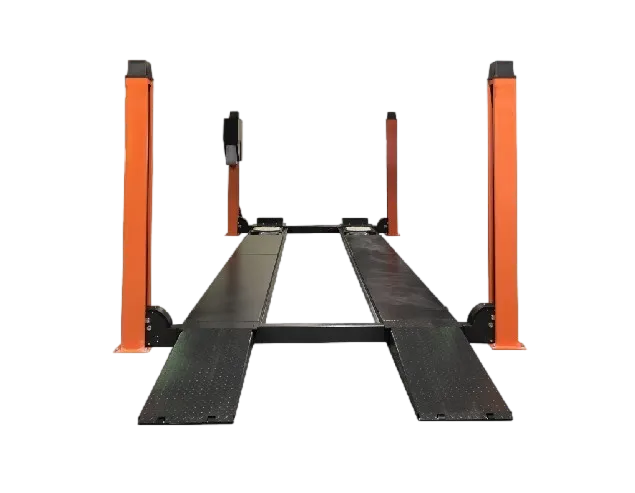The Evolution of Vehicle Maintenance Efficiency
In today’s fast-paced automotive industry, efficiency and safety are paramount in every workshop. From general repairs to full-scale servicing, the need for dependable and time-saving equipment cannot be overstated. One such indispensable tool in modern garages is the hydraulic car lift. Whether for personal garages or professional service centers, the integration of a hydraulic car lift brings a host of advantages that streamline workflow and improve the overall maintenance experience.
Enhanced Accessibility and Visibility
Improved Undercarriage Access
A hydraulic car lift elevates the entire vehicle off the ground, granting unobstructed access to the undercarriage. This feature is particularly useful for inspecting exhaust systems, suspension components, and brake lines. Technicians no longer have to rely on jacks and creepers, which can be cumbersome and physically straining. With a hydraulic car lift, routine inspections become faster, safer, and more thorough.
Better Lighting and Inspection Angles
Lifting a car to a comfortable working height also enhances visibility. Overhead lighting in workshops becomes more effective when components are at eye level rather than near the ground. This contributes to more precise inspections and diagnostics, reducing the likelihood of errors and overlooked issues. A hydraulic car lift, therefore, directly supports improved service quality.

Safety and Ergonomics for Technicians
Reduced Risk of Injury
Working on vehicles without adequate lifting equipment poses serious safety risks. Manual jacks and floor stands can fail or shift, potentially leading to accidents. A hydraulic car lift, built with sturdy platforms and reliable locking mechanisms, significantly reduces the danger associated with under-vehicle work. It ensures that the vehicle remains securely in place throughout the maintenance process.
Minimizing Physical Strain
Technicians often endure back, knee, and shoulder pain from working in cramped positions. By bringing the vehicle to a more ergonomic height, a hydraulic car lift minimizes unnecessary physical strain. This not only improves the comfort and well-being of workers but also enhances productivity by allowing them to work more efficiently and for longer periods.
Time and Labor Efficiency
Streamlined Workflow
Time saved is money earned, especially in automotive service businesses. A hydraulic car lift speeds up various tasks such as oil changes, tire rotations, and brake servicing. Instead of spending time setting up jack stands and repositioning vehicles, technicians can elevate cars in seconds and move on to the task at hand. This streamlining effect has a tangible impact on daily operations.
Multi-Vehicle Capacity
Many workshops feature multiple hydraulic car lift stations, allowing parallel servicing of several vehicles. This enables better workload distribution among staff and reduces customer wait times. For smaller home garages, even a single hydraulic car lift transforms the space into a more versatile and functional environment for DIY repairs and maintenance.
Versatility Across Vehicle Types
Supporting a Range of Weights
Hydraulic car lifts come in various weight capacities, accommodating everything from compact cars to heavy-duty trucks. This makes them suitable for diverse vehicle fleets, which is essential for commercial garages and fleet maintenance providers. Adjustable arms and platform widths further ensure compatibility with different chassis dimensions.
Adapting to Specialized Work
Some hydraulic car lifts offer configurations tailored for specific tasks. For instance, scissor lifts and four-post lifts are ideal for wheel alignments and diagnostics. With add-on accessories and modular design elements, technicians can easily adapt the hydraulic car lift setup for engine work, detailing, or suspension upgrades.
Long-Term Durability and Reliability
Robust Construction Materials
A well-constructed hydraulic car lift is built to last. High-strength steel, corrosion-resistant finishes, and industrial-grade hydraulic systems contribute to extended service life. When properly maintained, these lifts offer years of dependable performance, justifying their upfront cost through durability and reduced replacement needs.
Low Maintenance Requirements
Despite their robust design, many hydraulic car lifts require minimal upkeep. Regular fluid checks, hose inspections, and simple lubrication are often all that’s needed to keep the lift running smoothly. Automated safety features like overload protection and fail-safes further reduce the need for frequent manual oversight.
Increased Space Efficiency in Garages
Maximizing Vertical Space
For garages with limited floor area, a hydraulic car lift opens up new possibilities. By elevating one vehicle, another can be parked underneath, effectively doubling storage capacity. This is especially valuable in residential garages or small commercial shops where square footage is at a premium.
Organized and Tidy Work Environment
Using a hydraulic car lift helps maintain a cleaner and more organized workspace. Tools, parts, and equipment are easier to manage when vehicles are elevated and out of the way. This contributes to a more professional appearance and reduces clutter-related hazards.
Boosting Customer Trust and Satisfaction
Professionalism and Confidence
When customers see a hydraulic car lift in use, it creates an impression of professionalism and capability. It signals that the workshop is equipped with modern tools that prioritize accuracy and safety. This builds confidence in the service provider and fosters long-term client relationships.
Faster Turnaround Times
Customers appreciate quick and efficient service. By enabling faster diagnostics and repairs, a hydraulic car lift plays a key role in reducing turnaround time. Happy customers are more likely to return and recommend the business to others.
Environmentally Friendly Practices
Reducing Oil Spills and Waste
Hydraulic car lifts allow for cleaner oil changes and fluid maintenance, reducing the risk of spills. Elevated access ensures that containers can be positioned correctly, and waste disposal becomes easier and more controlled. This minimizes environmental impact and helps shops stay compliant with regulations.
Energy-Efficient Options
Some modern hydraulic car lift models are designed with energy efficiency in mind. Low-power motors, hydraulic fluid recycling systems, and auto-shutdown features contribute to a greener operation. Choosing eco-friendly lift options aligns with broader sustainability goals in the automotive industry.
FAQs
How much space is needed to install a hydraulic car lift?
The space required varies by model, but a standard two-post or four-post hydraulic car lift generally needs a ceiling height of at least 10 to 12 feet and a footprint of 10x20 feet or more. Always refer to manufacturer specifications.
Are hydraulic car lifts safe for home garage use?
Yes, when installed correctly and used according to guidelines, a hydraulic car lift can be a safe and valuable addition to a home garage. Be sure to choose a model appropriate for your vehicle type and weight.
What is the maintenance schedule for a hydraulic car lift?
Routine maintenance includes checking hydraulic fluid levels, inspecting hoses and seals for leaks, and lubricating moving parts. A detailed schedule is usually provided by the manufacturer.
Can a hydraulic car lift accommodate larger vehicles like trucks and SUVs?
Absolutely. Many hydraulic car lifts are designed with adjustable arms and high weight capacities to accommodate trucks, SUVs, and other large vehicles. Ensure the model you select meets your specific needs.
Table of Contents
- The Evolution of Vehicle Maintenance Efficiency
- Enhanced Accessibility and Visibility
- Safety and Ergonomics for Technicians
- Time and Labor Efficiency
- Versatility Across Vehicle Types
- Long-Term Durability and Reliability
- Increased Space Efficiency in Garages
- Boosting Customer Trust and Satisfaction
- Environmentally Friendly Practices
- FAQs

